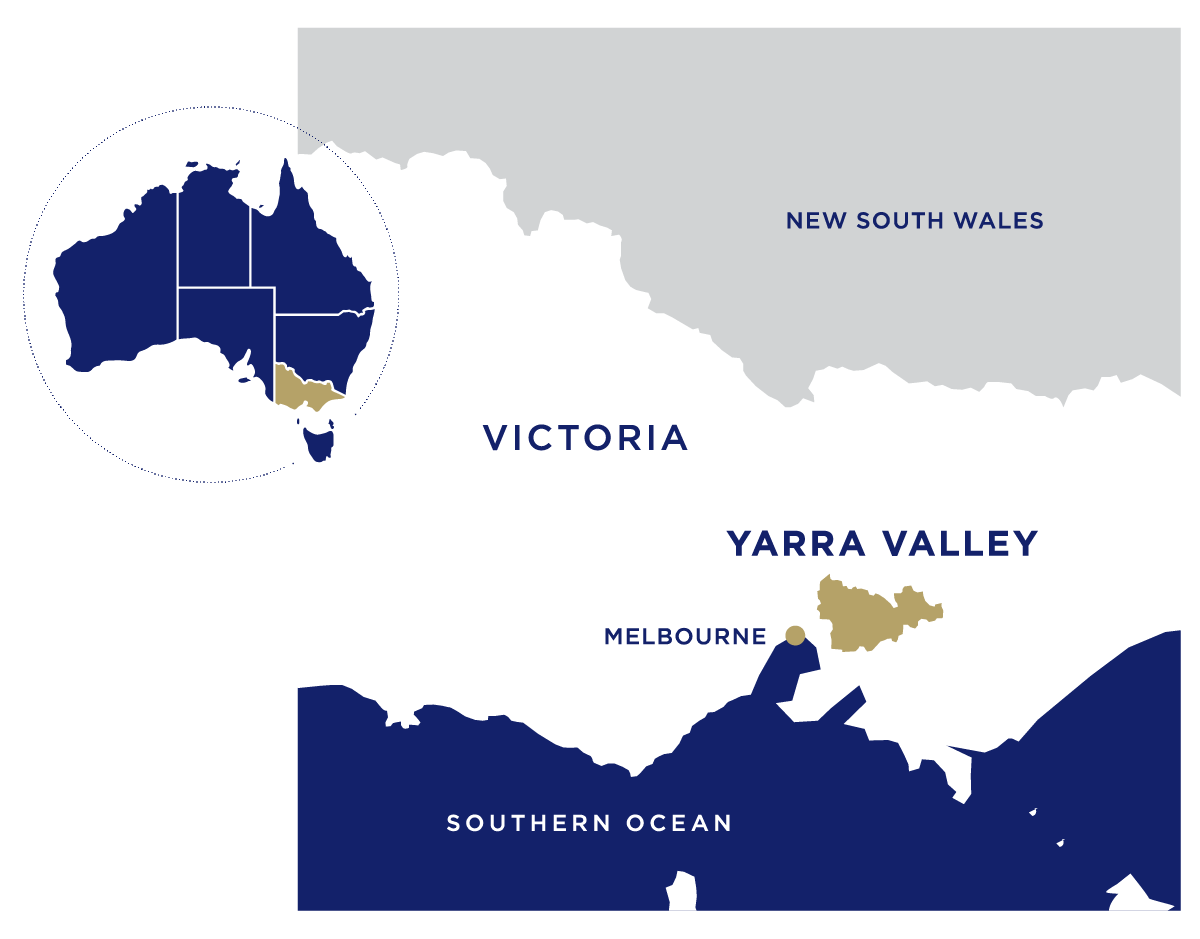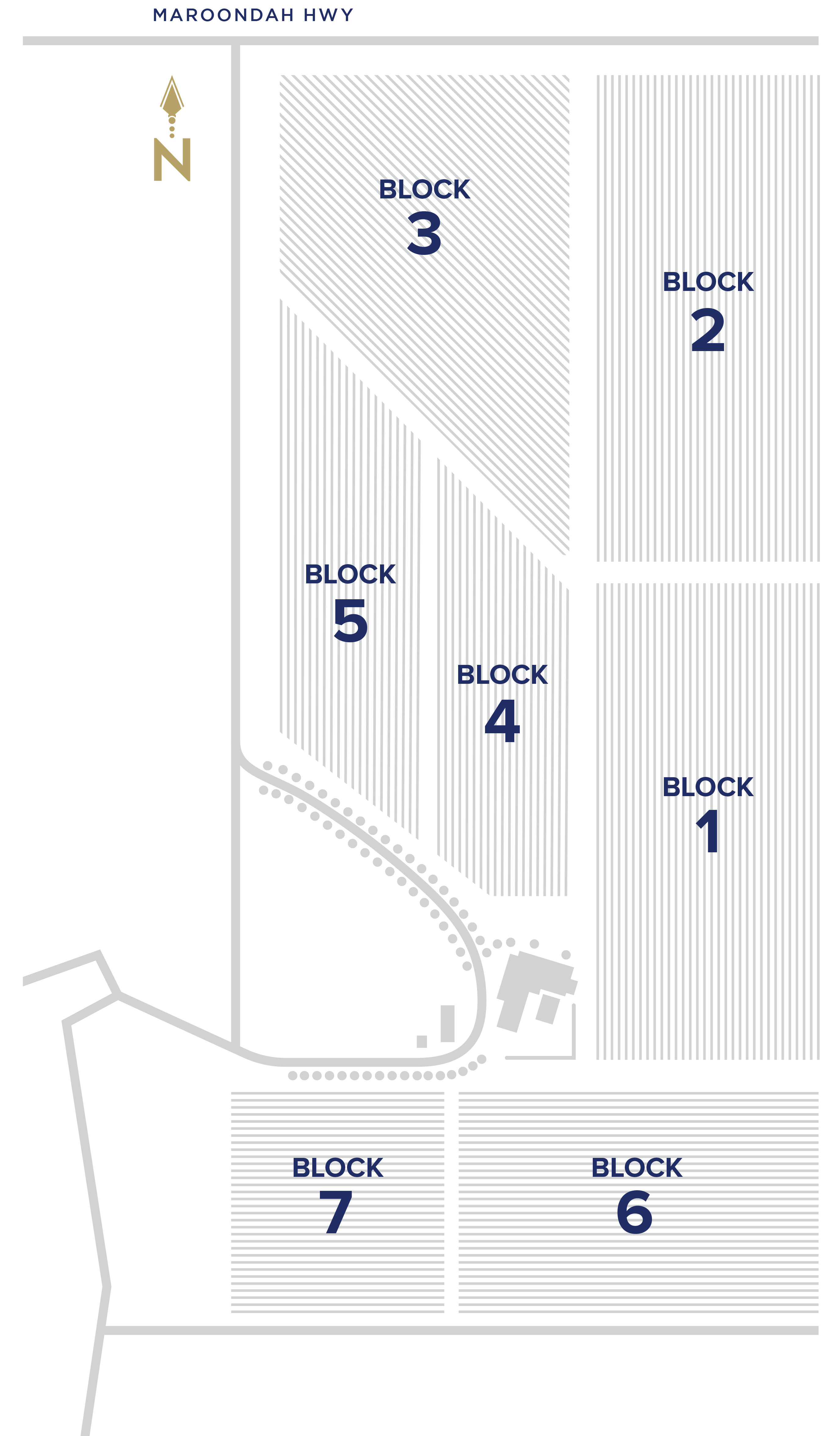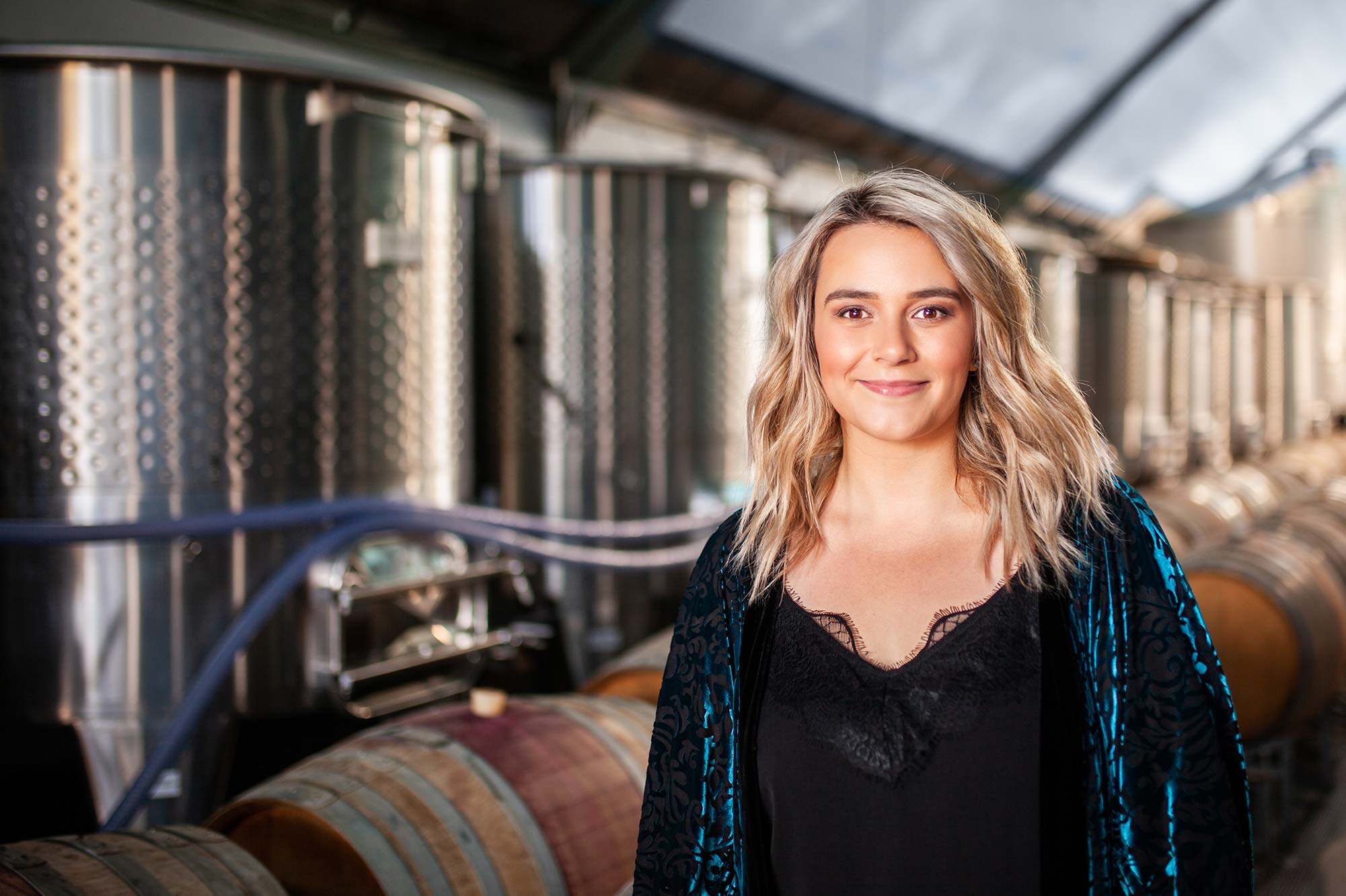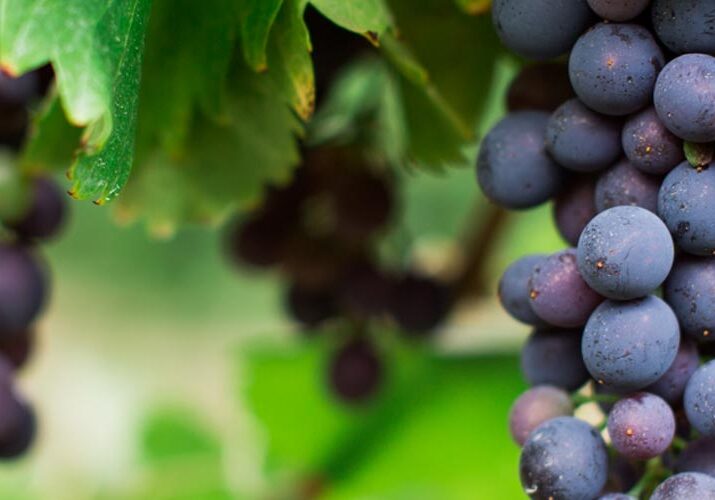Our Vineyard
We make Warramunda Estate wines to reflect their terroir – the distinctive place in which they are grown, Coldstream. The work we do in the vineyard is imperative to reflect and respect the earth in which the grapes are grown.
Covering some sixty-five acres, the vineyard consists of Chardonnay, Viognier, Marsanne, Pinot Noir, Syrah and Cabernet Sauvignon plantings. In 2015, we converted 23 rows of Cabernet Sauvignon to include Cabernet Franc, Merlot, Malbec and Petit Verdot, which are blended along with the Cabernet Sauvignon to make our Warramunda Cabernets a Bordeaux style blend.
Warramunda Estate practises sustainable viticulture which combines the practice of organic and biodynamic philosophies. We focus from the earth to the vine primarily managing the microflora that exist in the soil. Our soil consists of layers of sandy loam, sedimentary rock, sandstone cap followed by more sedimentary rock then finally clay. The microflora mainly exist within the sandy loam which is at the surface. We focus on planting organic materials such as rye & clover (cover crops) which is worked through the sandy loam (compost), promoting high levels of worm activity and creating a high-quality balance of microflora.
We rely on only natural rainfall which also delivers a balance throughout the growing season. All vineyard management processes are determined by the Lunar Cycle which outlines four three-day periods called flower day, fruit day, root day and leaf day. Throughout the lunation cycle the moon passes through four phases – New Moon, First Quarter, Full Moon and Last Quarter. The number of days between each change of phase can vary from 6.75 to 8. All vineyard management processes such as pruning are determined by the Lunar Cycle.
Our focus on canopy ensures that we have a balanced ratio of grapes to foliage, creating the right amount of energies driven into the development and ripening of fruit. This process confirms that we have the exact balance between sugars and acids at harvest.
The vineyard’s canopies are protected throughout the growing season with the use of natural sprays such as Bordeaux Blend (Copper Sulphur). We strictly use no insecticides which, aside from being better for the environment, also promote a diverse selection of beneficial insects that eat all the predatory pests and insects. Each step provides the perfect balance to grow super premium grapes.
Our vineyard team spends a significant amount of time tending to each vine in each block to ensure the vines are healthy and reflecting their natural growth patterns to produce fruit of optimum quality. The culmination of each of these small and melodic steps is to produce an output that is both unique to the individual style of the wine that we are creating while reflecting the distinctive terroir of Warramunda Estate. These are benchmark wines which are true to the characteristics of Coldstream in the Yarra Valley, strong varietal aromas, wonderful flavours and soft balanced tannins.
Vineyard Map

To view more information about our vineyards, click / tap on the interactive blocks.

PLANTED SPRING 1998
VARIETIES & CLONES
Cabernet Sauvignon | Reynella CW44 & SA125 |
Cabernet Franc RM | P58 grafted on 101-14MGT Phylloxera Resistant Rootstock |
Merlot RM | Q45-14 grafted on 101-14MGT Phylloxera Resistant Rootstock |
Malbec RM | Kalimna 2 grafted on 101-14MGT Phylloxera Resistant Rootstock |
Petit Verdot RM | G7V1 grafted on 101-14MGT Phylloxera Resistant Rootstock |
CHARACTERISTICS
REVIEWS
“Such length, such purity, such elegance. This is an effortless example of Yarra Valley cabernet, its blackcurrant and bay leaf notes leavened perfectly by violet and redcurrant. Tannin is fine and integrated; acidity is present but not dangerous. Everything here is in fine order.”
Campbell Mattinson, Writer for James Halliday
95 points | Gold medal
PLANTED SPRING 2007
VARIETIES & CLONES
|
Shiraz Bests Old Block
|
101-14 Phylloxera Resistant Rootstock
|
CHARACTERISTICS
REVIEWS
Jane Faulkner, Writer for James Halliday
96 points | Gold medal
PLANTED SPRING 1999
VARIETIES & CLONES
Pinot Noir MV6
CHARACTERISTICS
The struggle is real when it comes to Pinot Noir perfection. We believe that the best Pinot Noir is created by utilising the correct blends of different clones, thus, we grow six different clones across three blocks. Block Three houses our prized MV6-Clone, Clos Vougeot – Cote de Nuits adds structure, low bunch weight, small berries, good fruit character, colour with gamey flavours.
REVIEWS
“...the wines are terrific. Fine and fragrant, the cranberry and maraschino cherry aromas are backed by a whiff of autumnal leaves. The palate is precise and pleasing with generous red fruits and a savoury aftertaste.”
Gourmet Traveller Wine Magazine 2019 of the 2017 Pinot Noir
So esteemed are our Pinot Noirs that the 2017 vintage also won a
Silver at the 2019 Asia Decanter Wine Awards.
PLANTED SPRING 2001
VARIETIES & CLONES
Marsanne | North East Victoria Selection |
| Viognier | Condrieu |
CHARACTERISTICS
REVIEWS
“Everything about this is finely tuned: delicate florals of lemon blossom, honeysuckle and lavender: the right amount of spice - ginger especially and lemon flavours with zest and curd. Very tight, almost linear and while enchanting in its youth, it will reward more with bottle age”.
Campbell Mattinson, Writer for James Halliday
95 points | Gold medal
Huon Hooke rated our Viognier the best Australian Viognier for 2016 out of Eighteen top competitors. With a five-star rating and an incredible 96 points, we are elated with the success that this wine has received. “Very light, bright yellow / green hue and a fresh, floral, aromatic bouquet, with some spice and oak-assisted hints, the palate rich and yet discreet, with balance and compactness. It’s a controlled viognier, not fat or clumsy or blowsy. Lovely wine, very good intensity line and length. Clean, dry, balanced finish. Delicious wine! (Early-picked at 11.8 Baume, fermented in older puncheons, no malolactic fermentation) ★★★★★”.
Huon Hooke. 96 Points | ★★★★★
2015 Late Harvest Fortified Viognier: “A lightly golden yellow in colour with an attractive nose of marmalade and apricot jam with fresh honey. A luscious wine but with impact of fruit and acidity not just fortification spirit, there is almost a clotted cream like richness to the wine that is lifted by just the right amount of residual sugar. The finish has a gentle nuttiness to it and brilliant length of floral apricot. Quite stunning.” Patrick Eckel Wine reviewer.
96 Points | Gold Medal
PLANTED SPRING 2001
VARIETIES & CLONES
Pinot Noir | Clones 114, 115, G5V14 |
CHARACTERISTICS
REVIEWS
“It steps up to the '17 vintage and says Thank You Very Much. It presents a sweep of spice and fruit flavours and then adds beet and a general tanginess to the show. It's well shaped, textured and powered, but mostly it's just beautifully drinkable.” Campbell Mattinson, Writer for James Halliday
94 points | Silver medal
PLANTED SPRING 2018
VARIETIES & CLONES
|
Pinot Noir
|
MV6 Grafted on Teleki 5C Phylloxera Resistant Rootstock
|
|
Pinot Noir
|
667 Grafted on Teleki 5C Phylloxera Resistant Rootstock
|
|
Pinot Noir
|
ABEL Grafted on Teleki 5C Phylloxera Resistant Rootstock
|
CHARACTERISTICS
PLANTED SPRING 2018
VARIETIES & CLONES
Chardonnay | |
Mendoza | Grafted on Teleki 5C Phylloxera Resistant Rootstock |
P58 | Grafted on Teleki 5C Phylloxera Resistant Rootstock |
CHARACTERISTICS
Block Seven is our little Chardonnay block of only four acres, growing two clones bringing great flavours and vibrant acidity.
Mendoza is a low-yielding clone with small bunches and variable berry size. Exposure to air and sun is necessary for developing full, ripe flavours. Small berries ensure intense flavours are expressed in the final wine Mendoza is a premium clone for Chardonnay wines especially for full bodied, textural, barrel-fermented styles. With flavours of peach, apricot and pineapple, grapefruit pith, citrus and floral aromas and a brisk, refreshing shot of bright citrus and stone fruit with vibrant acidity.
REVIEWS
2019 Liv Zak Chardonnay: “A bright and racy style of Chardonnay, lively in its stone fruit and citrus characters. Shows just the faintest nutty notes and a barely-there lick of vanilla cream. It rolls racy and bright through its fresh length. It feels vivacious. Best drunk in the sunnier, warmer days.”
Mike Bennie, WBM May/June 2020
93 Points
Map
To view more information about our vineyards, open the drop-downs which correspond to each block!


Our People
ROBERT & IRENE MAGDZIARZ
Robert and Irene purchased Warramunda Estate, formerly Warramunda Station, in 2007, after long careers in the local hospitality industry as well as handplanting their first vineyard in the Macedon Ranges. As previous owners of pubs, bars and restaurants, Robert and Irene have a deep understanding and appreciation for quality produce and wanted the wines they produced to reflect this commitment to premium products, made with sustainable practice in mind.
OLIVIA ZAK-MAGDZIARZ
After a childhood spent on her parent’s vineyard in the Macedon Ranges and the Yarra Valley, it only made sense that Liv would take on the family business of winemaking and at the age of 16 she undertook her first vintage at Yering Station. Alongside her budding career as a winemaker, Liv branched out into the Film & Television industry, specializing in special effects make up and worked extensively in Vancouver and Los Angeles. During this time Liv returned frequently to her home at the vineyard and has remained an integral member of our winemaking team.
Liv now manages alongside her parents the Warramunda Estate Cellar Door and is involved in all aspects of the business.
Our Winemaking Team
The driving force behind our talented vineyard team is a passion for sustainability and quality while creating premium wines that truly express the unique and idyllic terroir
in which they are made.
From harvesting to labelling and manning our cellar door, each member of our team is as crucial as they are versatile and perfectly encapsulate our dedication to creating amazing and well considered wines.

